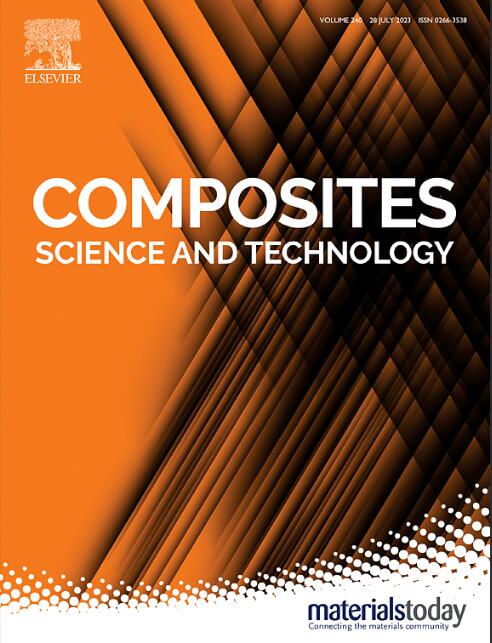基于原子力显微镜的纳米压痕技术表征亚麻纤维的横向和剪切模量
IF 8.3
1区 材料科学
Q1 MATERIALS SCIENCE, COMPOSITES
引用次数: 0
摘要
由于亚麻纤维具有复杂的层次结构,因此对其弹性特性进行实验评估具有挑战性,目前文献中还没有关于测量其横向和剪切模量的标准测试程序的报道。因此,本研究提出了一种基于原子力显微镜(AFM)的纳米压痕技术来评估亚麻纤维的横向和剪切模量。采用高精度聚焦离子束(FIB)铣削工艺,沿着纤维的纵向纤维横截面和横向纤维横截面,通过抛光单向(UD)薄片,制造出用于压痕的平面,以评估压痕模量。此外,还采用了斯旺森数值轮廓方法,根据测得的压痕模量评估纤维的弹性特性。通过在微观力学模型中使用实验获得的纤维特性来预测 UD 薄片的弹性特性,并将其与文献中报道的实验结果进行比较,从而验证了实验获得的纤维特性的准确性。本文章由计算机程序翻译,如有差异,请以英文原文为准。

Atomic force microscopy-based nanoindentation technique for characterizing the transverse and shear moduli of flax fibers
Experimentally evaluating the elastic properties of flax fibers is challenging due to their complex hierarchical structure, and a standard test procedure for measuring their transverse and shear moduli is currently not reported in the literature. Hence, this study presents an atomic force microscopy (AFM) based nanoindentation technique to evaluate the transverse and shear moduli of flax fiber. A high-precision focused ion beam (FIB)-milling process was used to fabricate a flat surface for indentation along the longitudinal fiber cross-section of the fiber and transverse fiber cross-section by polishing the unidirectional (UD) lamina in order to evaluate the indentation modulus. Further, Swanson's numerical contour approach was adopted to evaluate the elastic properties of the fiber from the measured indentation modulus. The accuracy of the experimentally obtained fiber properties is verified by using it in a micromechanics model for predicting the elastic properties of the UD lamina and comparing it with experimental results reported in the literature.
求助全文
通过发布文献求助,成功后即可免费获取论文全文。
去求助
来源期刊

Composites Science and Technology
工程技术-材料科学:复合
CiteScore
16.20
自引率
9.90%
发文量
611
审稿时长
33 days
期刊介绍:
Composites Science and Technology publishes refereed original articles on the fundamental and applied science of engineering composites. The focus of this journal is on polymeric matrix composites with reinforcements/fillers ranging from nano- to macro-scale. CSTE encourages manuscripts reporting unique, innovative contributions to the physics, chemistry, materials science and applied mechanics aspects of advanced composites.
Besides traditional fiber reinforced composites, novel composites with significant potential for engineering applications are encouraged.
 求助内容:
求助内容: 应助结果提醒方式:
应助结果提醒方式:


